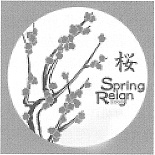|
(甲)俳句之緣起
俳句,乃最重要的傳統日本詩之一。“Haiku”一詞,原是中文「俳句」之日語讀音。「俳」是六朝(A.D. 220-581)時的一種戲劇,以俳優(優,即「伶人」)來舞蹈,並吟唱一整套的詩歌組曲,稱之為「俳歌」。此種「俳歌」,後來揉合了盛唐(A.D.600-750)之「絕句」──五或七言(亦可稱「五或七音節」,因為中文是一字一音)之四句詩,被當時歸國的日本留華學生引進日本,蛻變成為日本式的「俳歌」劇;復經過無數詩人們的努力,把它文學化,而號為「俳歌體」詩。
遠在早期的日本,相關之「俳句、發句、俳歌體」三者,就已常被混淆。「發句」本義為「引領頌」,是繫於眾所周知的長套「俳歌」之前導頌。因為發句為其後續吟唱的詩篇立出音律,使其在「俳歌體」中獨佔鰲頭;故此詩人單純地只作發句,而不續完其餘的全套詩歌,就不足為奇了!這單獨成章的詩體,約在西元1890年左右正式發展成型,創名曰「俳句」;這種新體詩,是可以完全獨立來讀誦、寫作的,毋須躋身為一套長篇詩歌的部分。簡要言之,發句與俳句, 可以用「古典俳句」和「近代俳句」兩種名稱來區分之。
(乙)俳句的寫作
今日之俳句,係由分別是「五音節、七音節句、五音節句」之三句詩組合而成的十七音節詩。作俳句,要特別注意三點:
(1) 平常的題材:俳句幾乎可以用來描寫任何東西,但是你很少會見到複雜得令一般人難以認知和瞭解的主題。有些令人醉心的詩句,以另一種手法來描寫日常景況,令讀者對熟知的事物產生嶄新的體驗。
(2) 季節性的主題:每一首俳句必須包含一個「季候」,來點明這首俳句作於哪個季節。譬如,櫻花表示春,雪點出冬,青蛙描寫夏;不過這個季節性的字,並非經常是顯而易見的。
(3)跳脫的技巧:「跳脫」,是詩創作的獨特技巧。俳句因文字的「跳脫」而分成兩部分,以一種想像的距離,使這兩部分各自保持某種程度的獨立,而含義又能充分相應。在英文俳句運用跳脫手法,通常在第一或第二句,以一個冒號(!)、轉折號(──)或者省略符號(……)做句尾。
(丙)俳句之譯作與英文創作
現今之俳句,已被用多種文字、以各種格律來創作。對於翻譯的日本俳句詩而言,譯者必須決定他是否要嚴守其規則,或者只呈現此俳句的意境;對於以英文原創的俳句詩而言,詩人則須更加小心,因為在陶醉於俳句之餘,亦有其文字運用的困難在。至於把英文俳句再翻譯成中文詩,以筆者多年寫作中國古典詩的立場而言,彷彿看待混血兒外孫──多少帶點中國味兒!
|
|
A. The Origin of Haiku
Haiku is one of the most important forms of traditional Japanese poetry. Haiku is originally the Japanese pronunciation of the two Chinese characters “俳句”.“俳” (pronounced “hai” in Japanese) was a kind of Chinese performing art popular during the Six Dynasties Period (c.e. 220-581). It was performed by the “俳優” (pronounced “haiyo” in Japanese). 優 means an actor, who dances and chants a chain of longer verses called “俳歌” (pronounced “haika” in Japanese). This kind of performing art and verses later combined with the “絕句” (句 means “short verses” and is pronounced “ku” in Japanese), a type of four-line poem with either five or seven characters (also five or seven syllables, because a Chinese character is one syllable per character) per line. These forms were brought to Japan by returning Japanese students who had visited and studied in China during the beginning period of the Tang Dynasty (around c.e. 600-750) and were transformed into Japanese style, haika. Later, after many poets’ efforts, haika was literalized and became one of the poetry styles known as haikai.
For many years in Japan, there has been confusion between the three related terms haiku, hokku and haikai. The term hokku (the Japanese way to pronounce 發句) literally means “starting verse”, and it was the first starting link of a much longer chain of verses known as haika. Because the hokku set the tone for the rest of the poetic chain, it enjoyed a privileged position in haikai poetry, and it was not uncommon for a poet to compose a hokku by itself without following up with the rest of the chain. This independence was formally established in the 1890s through the creation of the term haiku. This new form of poetry was to be written, read, and understood as an independent poem, complete in itself, rather than part of a longer chain. Briefly, the distinction between hokku and haiku can be made by using the terms “classical haiku” and “modern haiku”.
B. How to Write Haiku
Haiku today is a seventeen-syllable verse form consisting of three metrical units of five, seven, and five syllables. There are three important points in creating a haiku.
(1) Ordinary content. Haiku poems can describe almost anything, but you seldom find themes which are too complicated for the average person’s recognition and understanding. Some of the most thrilling haiku poems describe daily situations in a way that gives the reader a brand new experience of a well-known situation.
(2) Seasonal theme. Each haiku must contain a kigo (the Japanese way to pronounce季候), a word related to one of the four seasons which indicates in which season the haiku is set. For example, Sakura indicates spring, snow indicates winter, and fog indicates summer, but the season word isn’t always obvious.
(3) The technique of cutting. Cutting is a unique technique for creating a poem. Cutting divides the haiku into two parts, creating a certain imaginative distance between the two sections, but the two sections must remain, to a degree, independent of each other. Both sections must enrich the understanding of the other. To make this cutting in English, either the first or the second line usually ends with a colon, long dash, or ellipsis.
C. Translations & English-written Haiku
Haiku today are written under different rules and in many languages. For translated Japanese haiku poems, the translator must decide whether he should obey the rules strictly, or present the exact essence of the haiku. For haiku poems originally written in English, the poet should be more careful. There are the difficulties of handling words, as well as the pleasure of haiku. When translating the English-written haiku into Chinese poem style, I, who have been writing Chinese classic poems for many years, treat it like a mixed-blood grandchild and give it a Chinese flavor.

|